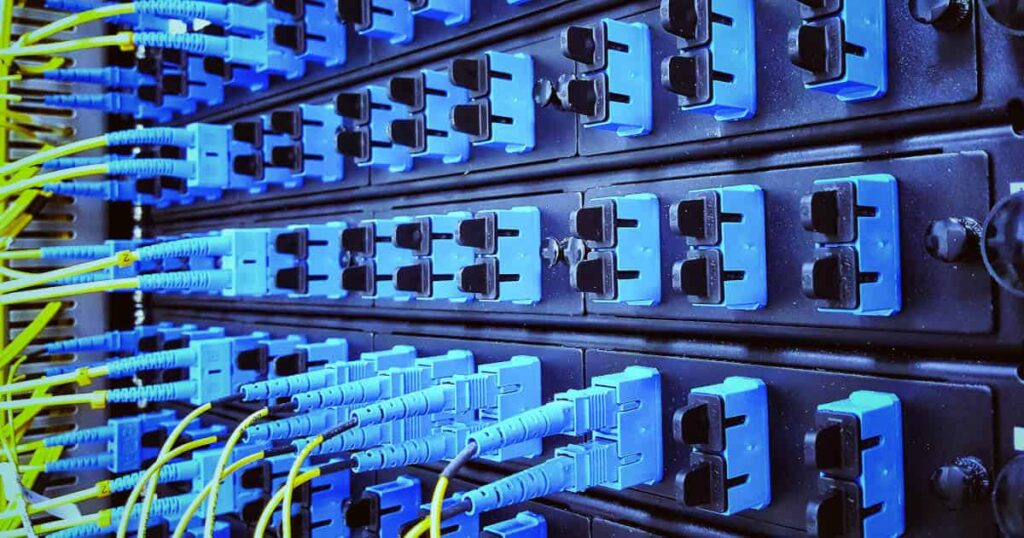127.0.0.1:57573 – Understand Loopback Addresses, Port Numbers, And Their Roles!
Have you ever stumbled upon a mysterious port number while tinkering with your computer and wondered what it’s all about? I’ve been there too. One day, I noticed 127.0.0.1:57573 on my system and couldn’t help but dive deeper to uncover its secrets.
I promise, by the end of this post, you’ll understand exactly what 127.0.0.1:57573 means, why it matters, and how to determine what’s running on that port.
127.0.0.1:57573 indicates a service running on your local machine, with 127.0.0.1 as the loopback address and 57573 as the port number. It’s used for network testing and accessing local services. To identify the specific service, check the port usage with tools like Netstat or lsof.
In this article, we’ll explore the basics of IP addresses and port numbers, why 127.0.0.1:57573 appears on your local machine, and step-by-step instructions to identify the service using this port.
Table of Contents:
What is 127.0.0.1?
127.0.0.1 is an IPv4 loopback address, a reserved address used to refer to the local computer. It allows a machine to communicate with itself over network protocols, making it an invaluable tool for testing and development purposes.

The loopback address, also known as localhost, is used to test network applications without sending data across a network. Any traffic sent to 127.0.0.1 is rerouted by the operating system back to the same machine.
The Role of Port Numbers:
A port number is an endpoint in the transport layer, identifying specific processes or services on a machine. When combined with an IP address, it allows data to be directed to the correct application. In the case of 127.0.0.1:57573, 57573 is the port number.
Common Port Numbers: Ports are categorized into well-known ports (0-1023), registered ports (1024-49151), and dynamic or private ports (49152-65535). Port 57573 falls into the dynamic range, typically used by applications and services that do not require a fixed port number.
Why Use 127.0.0.1:57573?
127.0.0.1:57573 is often used during software development and testing. It allows developers to run applications locally and test their network functionalities without exposing them to external networks.
By using the loopback address, developers can ensure their applications communicate correctly over network protocols. Port 57573 may be assigned dynamically, making it convenient for temporary testing purposes.

Using localhost minimizes security risks during development, as external entities cannot access the services running on 127.0.0.1.
How to Identify Services Running on 127.0.0.1:57573
Identifying what service is using a specific port can be crucial for troubleshooting and managing system resources. Here’s how you can do it on different operating systems:
On Windows
- Open Command Prompt: You can open it by typing cmd in the search bar.
- Run netstat: Use the command netstat -aon | findstr :57573. This will show the processes using port 57573.
- Identify the Process: Note the PID (Process ID) from the netstat output.
- Find the Application: Use tasklist | findstr <PID> to match the PID with the running application.
On macOS/Linux
Open Terminal: You can find it in the Applications/Utilities folder.
Run lsof: Use lsof -i :57573 to list the processes using the port.
Netstat Option: Alternatively, netstat -an | grep 57573 can also provide useful information.

Practical Uses of 127.0.0.1:57573:
Understanding how and why 127.0.0.1:57573 is used can give insights into practical applications:
Web Development
Developers often run web servers on their local machines for testing websites and web applications. By binding the server to 127.0.0.1, they ensure it is only accessible locally, preventing unauthorized access.
- Local Servers: Applications like Apache, Nginx, or development frameworks like Django and Rails often use localhost during development.
- API Testing: APIs can be tested locally, ensuring they work correctly before deployment.
Database Management
Local database servers (like MySQL, PostgreSQL) can be bound to 127.0.0.1, allowing secure management and testing of databases.
- Secure Access: Databases bound to localhost are not exposed to the internet, enhancing security.
- Performance Testing: Running databases locally helps in assessing performance and making necessary optimizations.
Networking Utilities
Various networking utilities and diagnostic tools use 127.0.0.1 for testing purposes.
- Ping and Traceroute: Tools like ping and traceroute can use 127.0.0.1 to verify network stack functionality on the local machine.
- Proxy Servers: Setting up local proxy servers for testing can involve binding them to 127.0.0.1.
Understanding TCP, UDP, and Port Ranges – Essential Tips for Network Services and Troubleshooting!
When dealing with network services and port numbers, understanding the protocols and port ranges is crucial. TCP (Transmission Control Protocol) and UDP (User Datagram Protocol) are the two main types of transport layer protocols.

TCP is connection-oriented, ensuring reliable and ordered data transmission, which is essential for applications like web browsing. UDP, on the other hand, is connectionless and faster, suitable for real-time applications such as video streaming.
Ports are categorized into different ranges: well-known ports (0-1023) are used by core services like HTTP and FTP; registered ports (1024-49151) are assigned to user processes or applications; and dynamic or private ports (49152-65535) are typically used for ephemeral connections.
For firewalls, loopback traffic on 127.0.0.1 usually bypasses most security rules since it’s internal to the local machine. However, it’s important to ensure that local services listening on these ports are secure to prevent vulnerabilities.
Network troubleshooting for 127.0.0.1 and port issues often involves checking whether the correct service is running and listening on the specified port. Tools like netstat, lsof, and firewall settings can help diagnose and resolve issues related to port accessibility and service connectivity.
Practical Applications of Localhost Services – Best Practices for Development and Security!
Localhost addresses like 127.0.0.1:57573 are used for a variety of purposes. For instance, developers often use these ports to run and test web servers, databases, and other applications without exposing them to external networks.

Common use cases include running a local instance of a web application for development, testing APIs, or configuring services like databases that interact with web servers on the same machine.When it comes to security, managing local services requires vigilance.
Although these services are not exposed to the internet, they can still be vulnerable if not properly configured. It’s important to implement strong authentication mechanisms, regularly update software to patch vulnerabilities, and avoid running unnecessary services to reduce risk.
Performance optimization for localhost services can significantly enhance system efficiency. Fine-tuning these services, such as adjusting resource allocations and minimizing background processes, helps prevent unnecessary strain on system resources, which can lead to smoother and more responsive development environments.
Common Questions About 127.0.0.1:57573:
1. What does 127.0.0.1:57573 signify?
127.0.0.1:57573 signifies a service running on the local machine (127.0.0.1) on port 57573. It is used for local testing and development purposes.
2. How can I find out what is running on port 57573?
You can use commands like netstat, lsof, or task managers to identify the process or application using port 57573 on your system.
3. Why use localhost for development?
Using localhost (127.0.0.1) ensures that the application or service is only accessible locally, providing a secure environment for development and testing without external exposure.
4. Can I change the port number from 57573 to something else?
Yes, port numbers can typically be configured in the application settings. You can choose any available port number for your local service.
5. Is it safe to run services on 127.0.0.1?
Yes, running services on 127.0.0.1 is generally safe as it restricts access to the local machine. However, ensure that sensitive data is appropriately protected.
Conclusion:
Understanding the role of 127.0.0.1:57573 helps explain how local networking and testing work. This special address and port number are key for software development, letting you test network applications safely and privately on your own computer.
If you’re a developer, network admin, or just interested in IT, knowing about localhost and dynamic ports like 57573 is important for managing networks effectively and securely.






